Discover the delicious and nutritious Fruits that start with the letter “M.” From familiar favorites to exotic surprises, explore this comprehensive guide tailored for fruit enthusiasts in the USA.
Fruits are nature’s sweet treasures, packed with essential vitamins, minerals and antioxidants. They play a crucial role in maintaining a healthy diet, offering a variety of flavors and textures that tantalize our taste buds. Among the vast array of fruits, those starting with the letter “M” hold a special place, offering unique benefits and culinary uses. In this article, we’ll embark on a journey through the world of “M” fruits, exploring their origins, nutritional value and how they can enhance your diet and dishes.
1. Mandarin
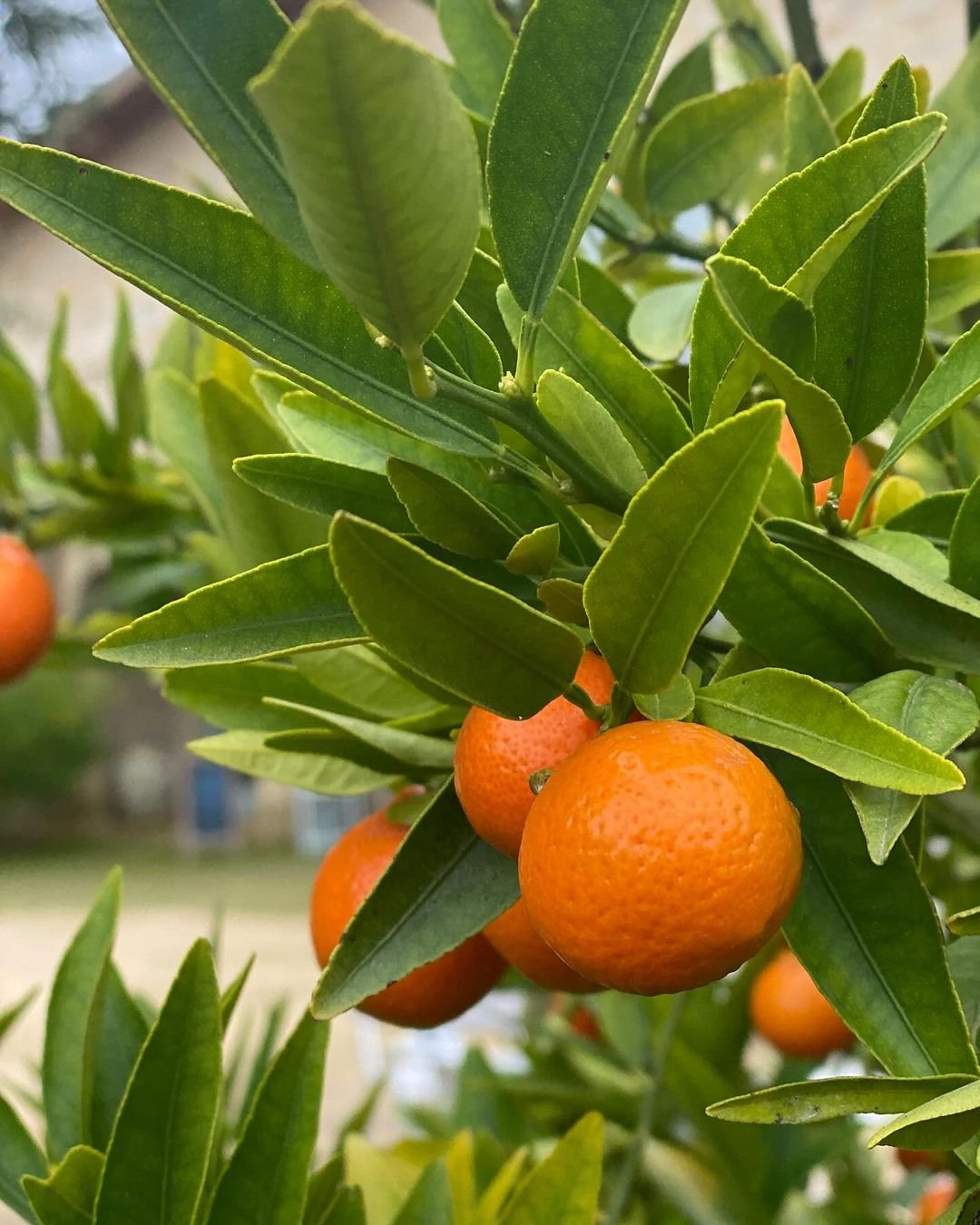
Here’s a short information chart about mandarins:
| Aspect | Information |
|---|---|
| Name | Mandarin |
| Scientific Name | Citrus reticulata |
| Origin | Southeast Asia, specifically China |
| Family | Rutaceae |
| Nutritional Value | High in Vitamin C, Vitamin A and Fiber |
| Taste | Sweet and juicy |
| Varieties | Clementine, Satsuma, Tangerine and others |
| Season | Typically winter, though some varieties available year-round |
| Uses | Eaten fresh, in salads, desserts and juices; also used in cooking and baking |
| Cultivation | Thrives in subtropical climates; propagated through seeds or grafting |
| Health Benefits | Boosts immunity, aids digestion, supports heart health and promotes skin health |
| Fun Fact | Mandarins are often associated with the Chinese New Year as symbols of prosperity and good luck. |
Starting our list is the Mandarin, a small citrus fruit known for its sweet flavor and ease of peeling. Originating from China, mandarins are a favorite among all ages, thanks to their bright color and juicy segments. Rich in vitamin C, mandarins support immune health and are a great snack for on-the-go.
2. Mango

here’s a short information chart about mangoes:
| Aspect | Information |
|---|---|
| Name | Mango |
| Scientific Name | Mangifera indica |
| Origin | South Asia, specifically India |
| Family | Anacardiaceae |
| Nutritional Value | Rich in Vitamin C, Vitamin A and Fiber |
| Taste | Sweet and tangy |
| Varieties | Hundreds of varieties, including Alphonso, Haden, Kent and Ataulfo |
| Season | Typically summer, though some varieties available year-round |
| Uses | Eaten fresh, in smoothies, salads, desserts; also used in sauces, chutneys and preserves |
| Cultivation | Requires tropical or subtropical climates; propagated through grafting or seeds |
The king of fruits, mango, hails from South Asia and is loved globally for its sweet, tropical taste. Packed with vitamins A and C, mangoes are also a good source of fiber. They can be enjoyed fresh, blended into smoothies or used in desserts and savory dishes alike.
3. Mulberry
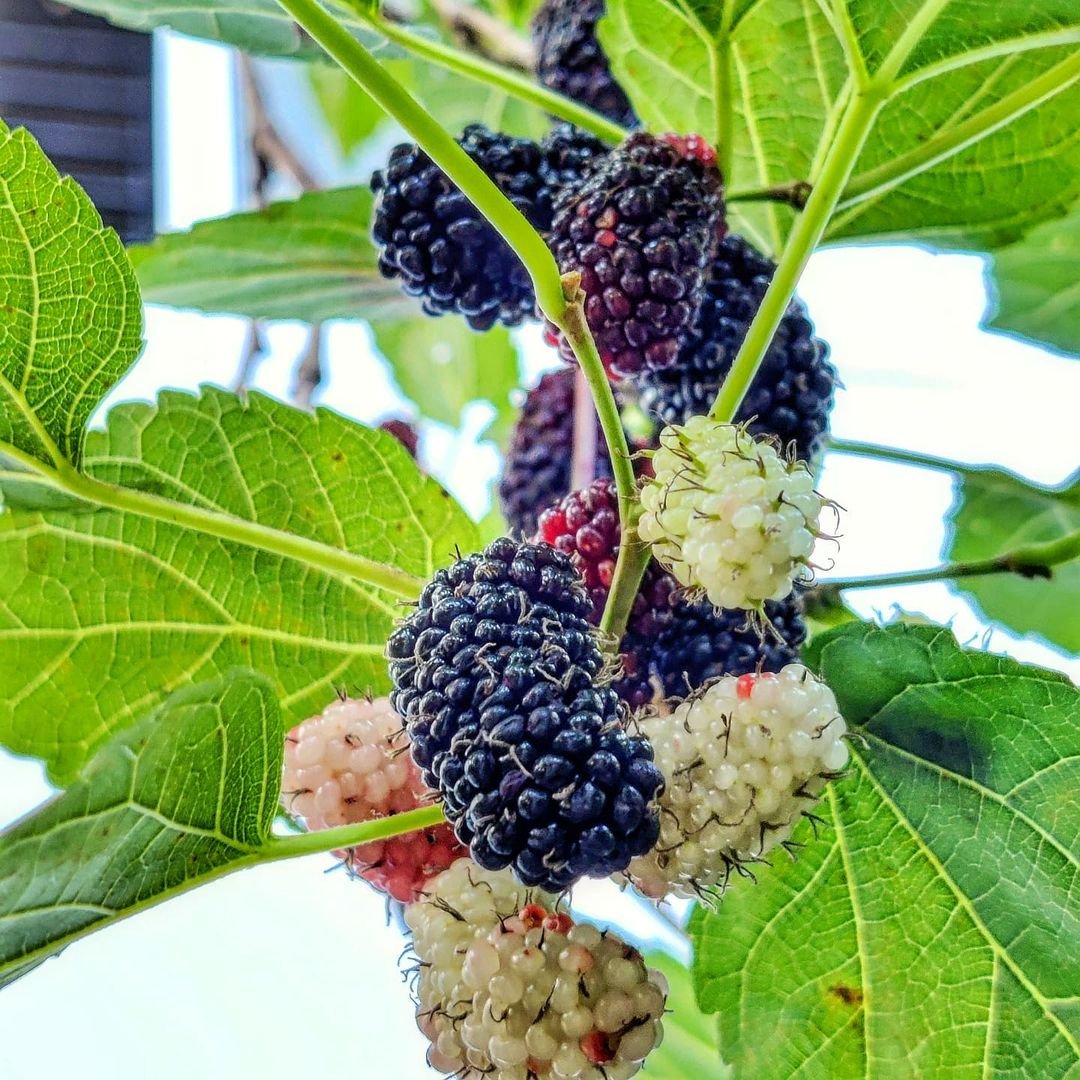
Here’s a concise information chart about mulberries:
| Aspect | Information |
|---|---|
| Name | Mulberry |
| Scientific Name | Morus |
| Origin | Asia, Europe, and North America |
| Family | Moraceae |
| Nutritional Value | High in Vitamin C, Vitamin K and Antioxidants |
| Taste | Sweet and mildly tart |
| Varieties | White mulberry, black mulberry, red mulberry and others |
| Season | Typically late spring to summer, depending on the variety |
| Uses | Eaten fresh, in jams, jellies, pies and wines; also used in traditional medicine |
| Cultivation | Adaptable to various climates; grown from seeds, cuttings or grafting |
| Health Benefits | Supports immune function, aids digestion and may help regulate blood sugar levels |
| Fun Fact | Mulberries are an important food source for silkworms used in silk production. |
Mulberries, with their unique reddish-purple color, are not just visually appealing but also highly nutritious. These fruits, grown on mulberry trees, are a rich source of resveratrol, a powerful antioxidant. Mulberries can be eaten raw, dried or made into jams and juices.
4. Mamey Sapote
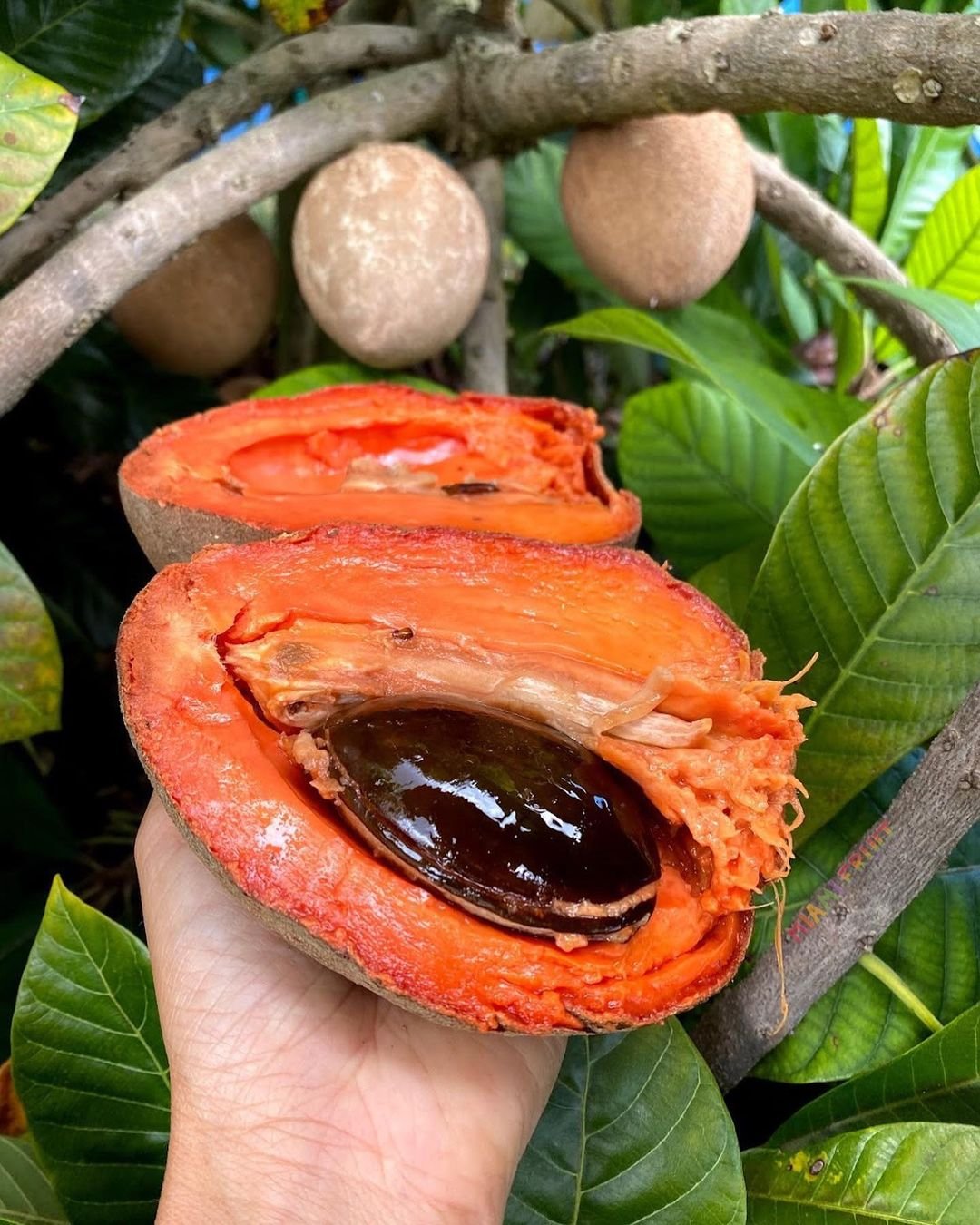
Here’s a short information chart about mamey sapote:
| Aspect | Information |
|---|---|
| Name | Mamey Sapote |
| Scientific Name | Pouteria sapota |
| Origin | Central America and southern Mexico |
| Family | Sapotaceae |
| Nutritional Value | High in Vitamin C, Vitamin A and Fiber |
| Taste | Sweet and creamy |
| Varieties | Not widely varied, but different cultivars exist with slight flavor and texture differences |
| Season | Typically late summer to fall |
| Uses | Eaten fresh, in smoothies, ice creams and desserts; also used in jams and preserves |
| Cultivation | Thrives in tropical climates; grown from seeds or grafting |
| Health Benefits | Rich in antioxidants, supports heart health and promotes digestion |
| Fun Fact | Mamey sapote is often used as a flavoring in traditional Mexican desserts and drinks. |
Originating from Central America, the Mamey Sapote is a less familiar fruit with a sweet, nutty flavor. Its deep reddish-brown flesh is rich in vitamins A and C, as well as dietary fiber. Enjoy it chilled as a refreshing snack or blended into smoothies.
5. Miracle Fruit
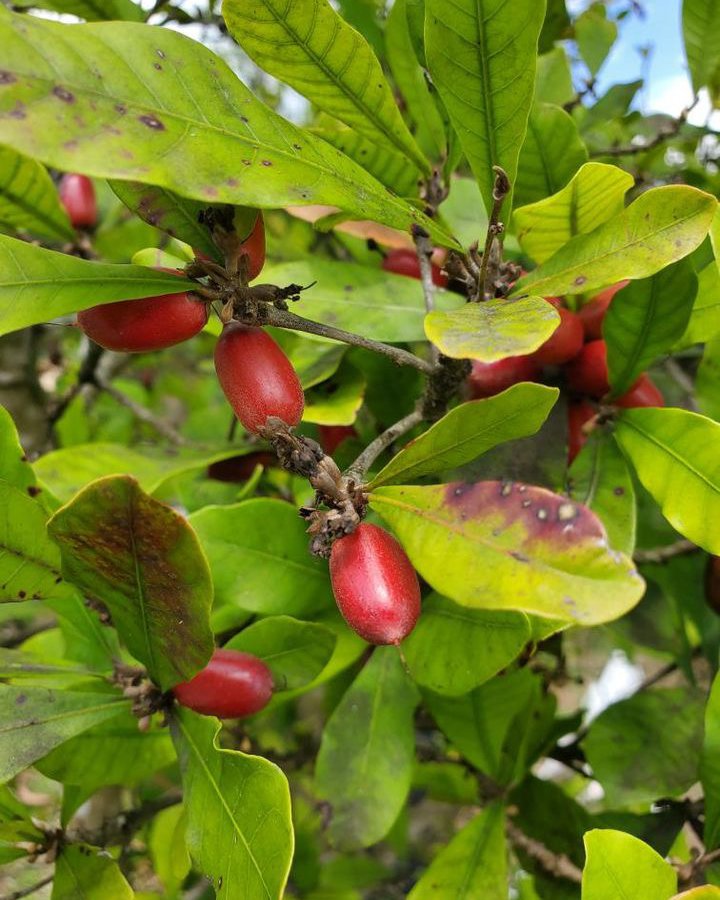
Here’s a brief overview of Miracle Fruit:
| Aspect | Information |
|---|---|
| Name | Miracle Fruit |
| Scientific Name | Synsepalum dulcificum |
| Origin | West Africa, specifically Ghana |
| Family | Sapotaceae |
| Nutritional Value | Contains flavonoids and antioxidants |
| Taste | The fruit itself is mildly sweet, but its primary feature is its ability to change sour flavors to sweet when eaten |
| Season | Year-round cultivation in tropical climates |
| Uses | Consumed primarily for its unique effect of altering taste perceptions; often used as a natural sweetener or flavor enhancer |
| Cultivation | Requires tropical or subtropical climates; grown from seeds or cuttings |
| Health Benefits | Limited research, but potential benefits include antioxidant properties and taste alteration for dietary adjustments |
| Fun Fact | The active compound in Miracle Fruit, called miraculin, binds to taste receptors on the tongue, causing sour foods to taste sweet. |
The Miracle Fruit, native to West Africa, is a berry that has the unique ability to make sour foods taste sweet. This effect is due to a molecule called miraculin, which alters the taste perception on the tongue. While it’s more of a novelty, the miracle fruit offers a fun way to explore different taste sensations.
6. Monstera Deliciosa
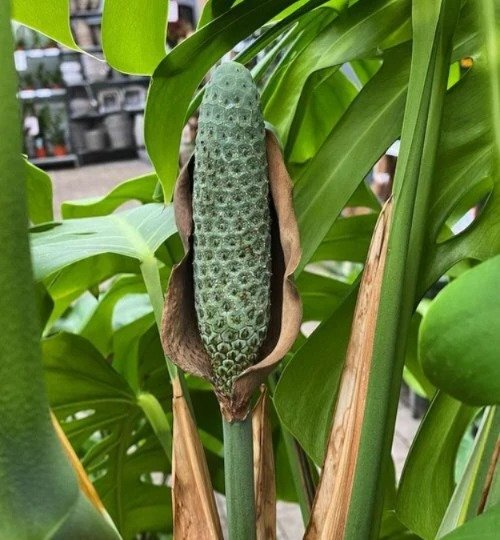
Here’s a concise information chart about Monstera Deliciosa fruit:
| Aspect | Information |
|---|---|
| Name | Monstera Deliciosa Fruit |
| Scientific Name | Monstera deliciosa |
| Origin | Tropical rainforests of Central America and Mexico |
| Family | Araceae |
| Nutritional Value | Limited data; likely contains some vitamins and minerals |
| Taste | Sweet, tropical, resembling pineapple or banana |
| Varieties | Typically no distinct varieties |
| Season | Typically fruits in late summer to fall |
| Uses | Rarely consumed due to limited availability and potential toxicity; occasionally used in jams, jellies or desserts |
| Cultivation | Grows on mature Monstera Deliciosa plants in warm, humid climates; challenging to replicate optimal conditions outside of its native habitat |
| Health Benefits | Limited research on specific health benefits; primarily valued as a decorative plant |
| Fun Fact | The name “Monstera” comes from the Latin word “monstrum,” meaning monster or abnormality, due to its unusual leaves. |
Also known as the Swiss Cheese Plant, Monstera Deliciosa is a tropical fruit that resembles a large green ear of corn when ripe. Its flesh is creamy and sweet, with a flavor reminiscent of pineapple and banana. Rich in vitamins B6 and C, it’s a unique addition to any fruit platter.
7. Mountain Papaya
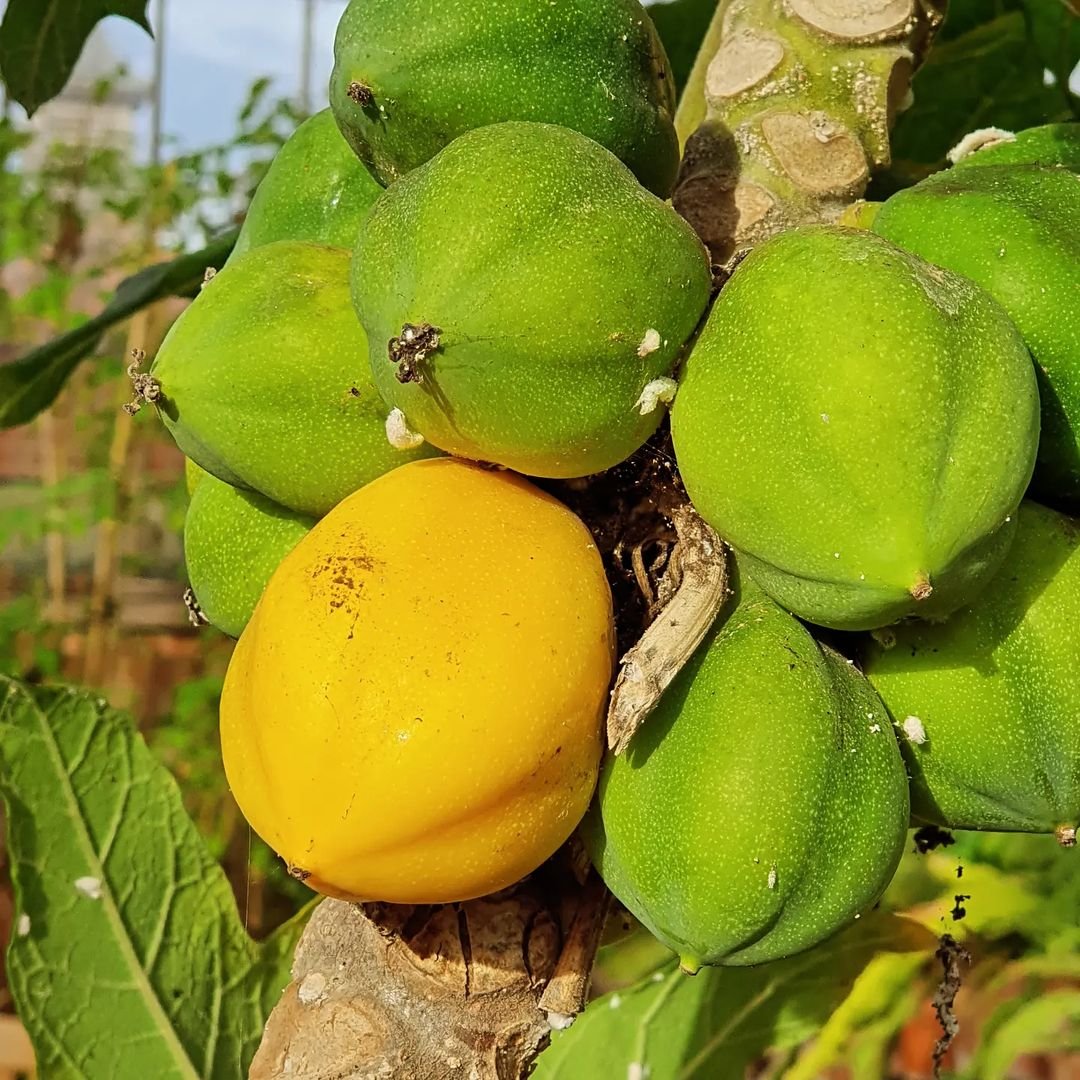
Here’s a short information chart about Mountain Papaya:
| Aspect | Information |
|---|---|
| Name | Mountain Papaya |
| Scientific Name | Vasconcellea pubescens |
| Common Names | Mountain pawpaw, highland papaya |
| Origin | South America, particularly the Andes |
| Family | Caricaceae |
| Nutritional Value | High in Vitamin C, Vitamin A and dietary fiber |
| Taste | Sweet and tropical, with a hint of tanginess |
| Varieties | Different varieties with slight taste and size variations exist |
| Season | Typically available year-round in suitable climates |
| Uses | Eaten fresh, in salads, smoothies and desserts; sometimes used in cooking and baking |
| Cultivation | Thrives in subtropical to tropical climates, prefers well-drained soil and ample sunlight |
| Health Benefits | Supports immune function, aids digestion and promotes eye health |
| Fun Fact | Mountain papaya is often grown as an alternative to traditional papaya in cooler climates due to its hardiness. |
The Mountain Papaya, or Vasconcellea pubescens, is a close relative of the common papaya. It’s smaller and has a more aromatic flavor. Originating from the Andean region, this fruit is rich in vitamin C and dietary fiber, making it a healthy choice for your fruit basket.
8. Mangosteen
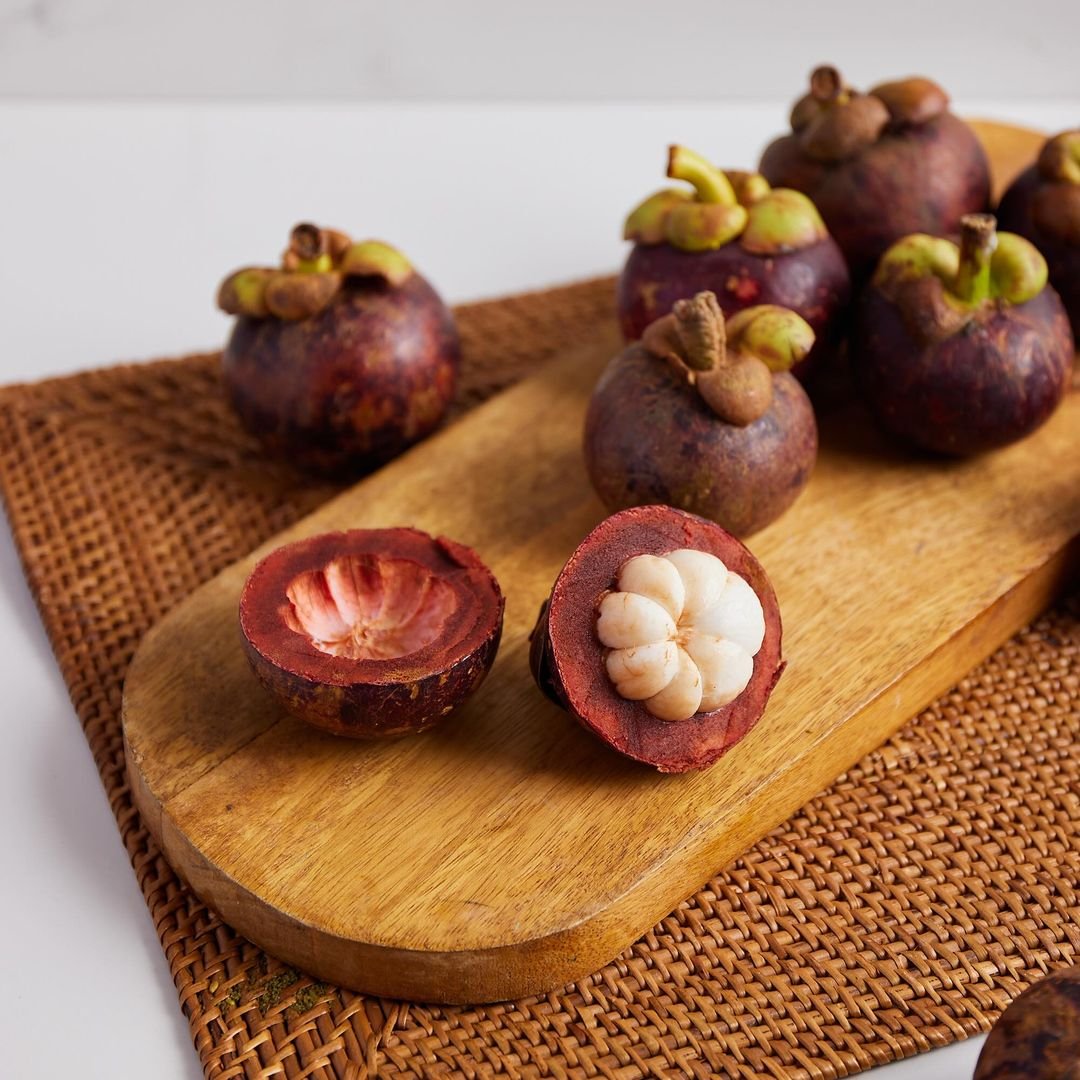
Here’s a concise information chart about mangosteen fruit:
| Aspect | Information |
|---|---|
| Name | Mangosteen Fruit |
| Scientific Name | Garcinia mangostana |
| Origin | Southeast Asia, particularly Indonesia, Thailand and Malaysia |
| Family | Clusiaceae |
| Nutritional Value | Rich in antioxidants, Vitamin C and dietary fiber |
| Taste | Sweet and tangy, with a hint of citrus flavor |
| Varieties | No distinct varieties; variations in flavor and size may occur |
| Season | Typically available during the summer months |
| Uses | Eaten fresh, as a dessert fruit; also used in juices, smoothies and jams |
| Cultivation | Requires tropical climates, grown in orchards with well-drained soil and ample moisture |
| Health Benefits | Supports immune function, aids digestion and may have anti-inflammatory properties |
| Fun Fact | Mangosteen is often referred to as the “queen of fruits” and is prized for its delicious flavor and health benefits. |
Often referred to as the “Queen of Fruits,” the mangosteen is prized in Southeast Asia for its sweet and acidic taste. Its white, segmented flesh surrounds a large seed and is rich in antioxidants, particularly xanthones, which have anti-inflammatory properties.
9. Melon
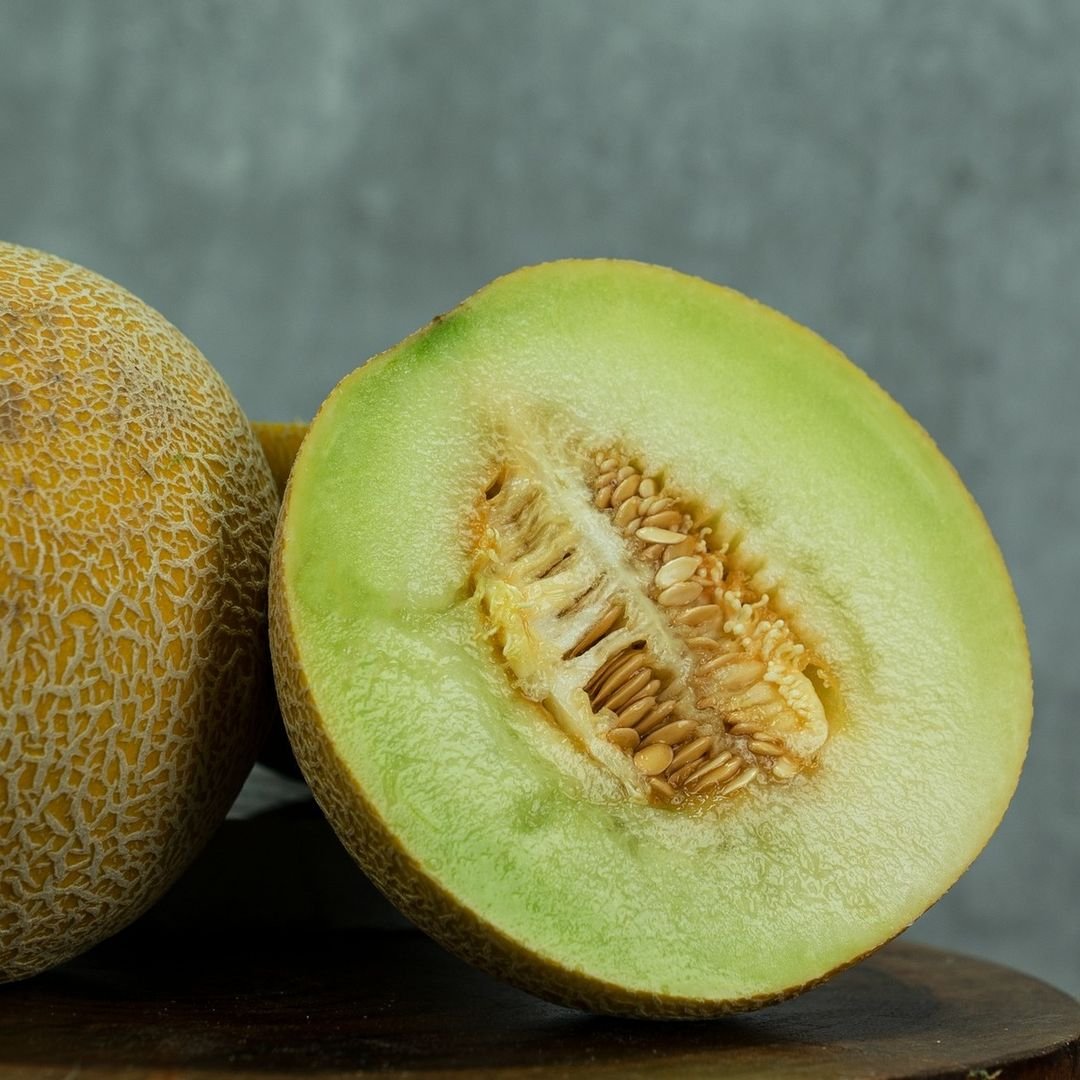
Here’s a brief overview of melon fruit:
| Aspect | Information |
|---|---|
| Name | Melon Fruit |
| Scientific Name | Cucumis melo |
| Origin | Africa, Asia, and the Middle East, possibly India |
| Family | Cucurbitaceae |
| Nutritional Value | High in Vitamin C, Vitamin A, and water content |
| Taste | Sweet and refreshing |
| Varieties | Numerous, including cantaloupe, honeydew and watermelon |
| Season | Typically summer, but availability may vary depending on the variety and location |
| Uses | Eaten fresh, in salads, fruit salads, smoothies, and desserts; also used in savory dishes in some cuisines |
| Cultivation | Grown in warm climates with well-drained soil and ample sunlight |
| Health Benefits | Hydrating, aids digestion, and provides essential vitamins and minerals |
| Fun Fact | The watermelon is both a fruit and a vegetable, belonging to the same family as cucumbers and squash. |
While “melon” encompasses a variety of fruits, including watermelon, cantaloupe and honeydew, it’s worth noting for its nutritional benefits. Melons are hydrating, low in calories and packed with vitamins A and C. They make for a refreshing summer snack or a light addition to salads.
10. Medlar
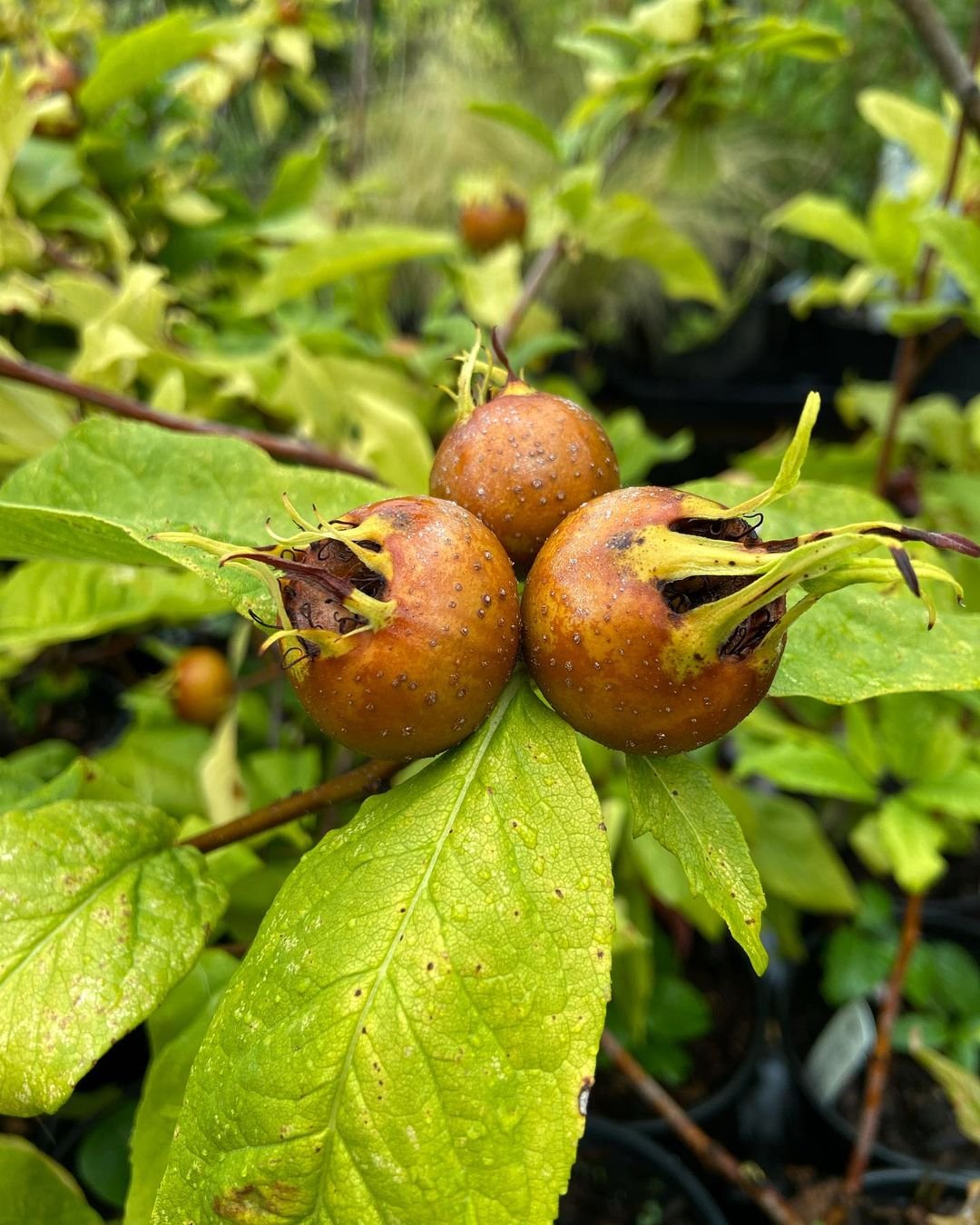
Here’s a short information chart about medlar fruit:
| Aspect | Information |
|---|---|
| Name | Medlar Fruit |
| Scientific Name | Mespilus germanica |
| Origin | Southwest Asia and Southeastern Europe |
| Family | Rosaceae |
| Nutritional Value | Contains vitamins, minerals, and dietary fiber |
| Taste | Tart when unripe, develops a sweet, spiced flavor when fully ripe |
| Varieties | Common varieties include Nottingham, Royal and Dutch |
| Season | Typically harvested in late autumn to early winter |
| Uses | Eaten fresh when fully ripe; can also be used in jams, jellies, and desserts |
| Cultivation | Grows in temperate climates, prefers well-drained soil and full sunlight |
| Health Benefits | Rich in antioxidants, supports digestion, and may have anti-inflammatory properties |
| Fun Fact | Medlar fruit is often referred to as the “cul-de-chien” or “dog’s bottom” due to its appearance when ripe and ready to eat. |
The medlar, a fruit that resembles a small apple or pear, has a unique requirement: it must blet (soften and decay) before it becomes edible. Once bletted, its taste is often compared to dates and apples. Medlars are rich in iron and vitamin C, offering a unique flavor and health benefits.
11. Monkey Apple
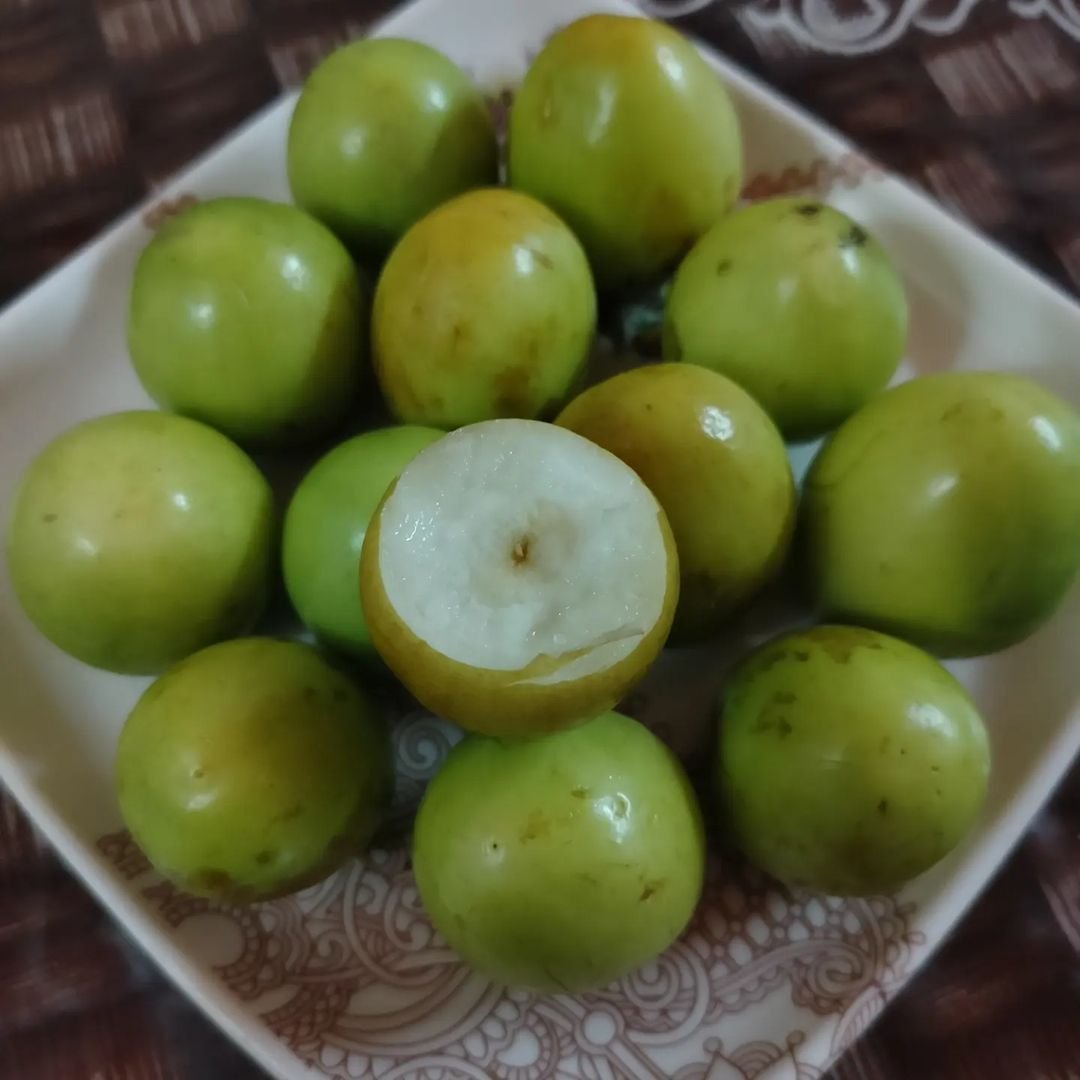
Here’s a concise information chart about Monkey Apple:
| Aspect | Information |
|---|---|
| Name | Monkey Apple |
| Scientific Name | Syzygium paniculatum |
| Common Names | Malay apple, mountain apple, otaheite cashew |
| Origin | Southeast Asia, specifically Malaysia and Indonesia |
| Family | Myrtaceae |
| Nutritional Value | Rich in Vitamin C, dietary fiber and antioxidants |
| Taste | Sweet and mildly tart |
| Varieties | Different cultivars exist, varying slightly in taste and size |
| Season | Typically fruits in late summer to early autumn |
| Uses | Eaten fresh, in salads and desserts; sometimes used in cooking and preserves |
| Cultivation | Grows in tropical and subtropical climates, prefers well-drained soil and regular watering |
| Health Benefits | Supports immune function, aids digestion and may help lower cholesterol levels |
| Fun Fact | In Malaysia and Indonesia, Monkey Apple is often used in traditional medicine for its purported health benefits. |
Despite its name, the Monkey Apple is not a true apple but a fruit native to Southeast Asia. It’s known for its hard shell and sweet, sticky flesh that’s often eaten raw or made into jams. High in carbohydrates, it provides a good energy boost.
12. Morello Cherry
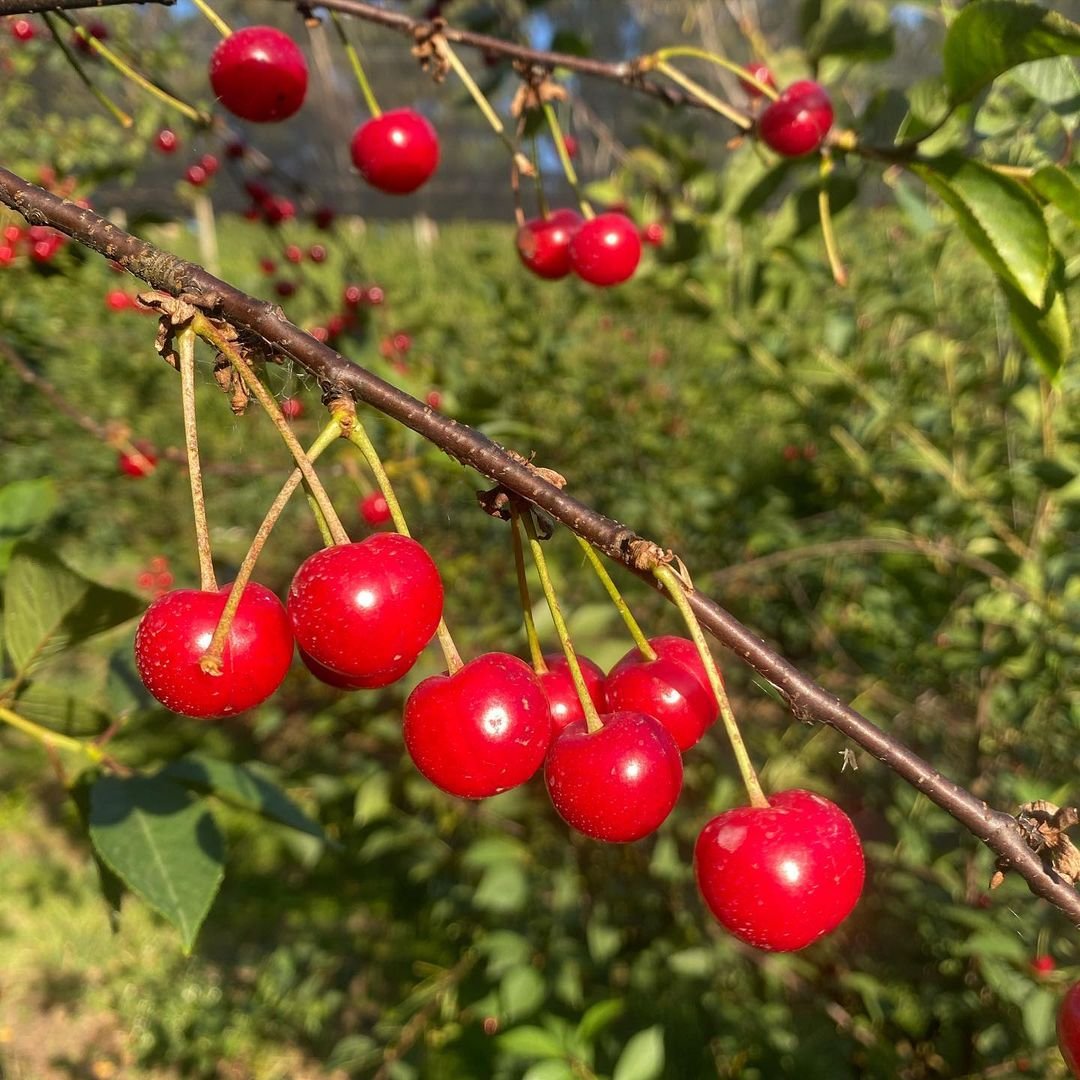
Here’s a short information chart about Morello Cherry:
| Aspect | Information |
|---|---|
| Name | Morello Cherry |
| Scientific Name | Prunus cerasus |
| Common Names | Sour cherry, tart cherry |
| Origin | Western Asia, Eastern Europe |
| Family | Rosaceae |
| Nutritional Value | High in Vitamin C, Vitamin A and antioxidants |
| Taste | Tart, tangy, and slightly sweet |
| Varieties | Different cultivars exist, with variations in color and flavor |
| Season | Typically fruits in late spring to early summer |
| Uses | Commonly used in baking, cooking, jams and preserves; also eaten fresh or dried |
| Cultivation | Grows in temperate climates, prefers well-drained soil and full sunlight |
| Health Benefits | Rich in antioxidants, may help reduce inflammation and promote heart health |
| Fun Fact | Morello cherries are widely used in European cuisine, particularly in desserts such as cherry clafoutis and cherry pie. |
The Morello Cherry is a sour variety of cherry, smaller and darker than the sweet cherry. It’s widely used in cooking, particularly for making pies, jams and sauces. Morello cherries are a good source of vitamin C and antioxidants.
13. Mayapple
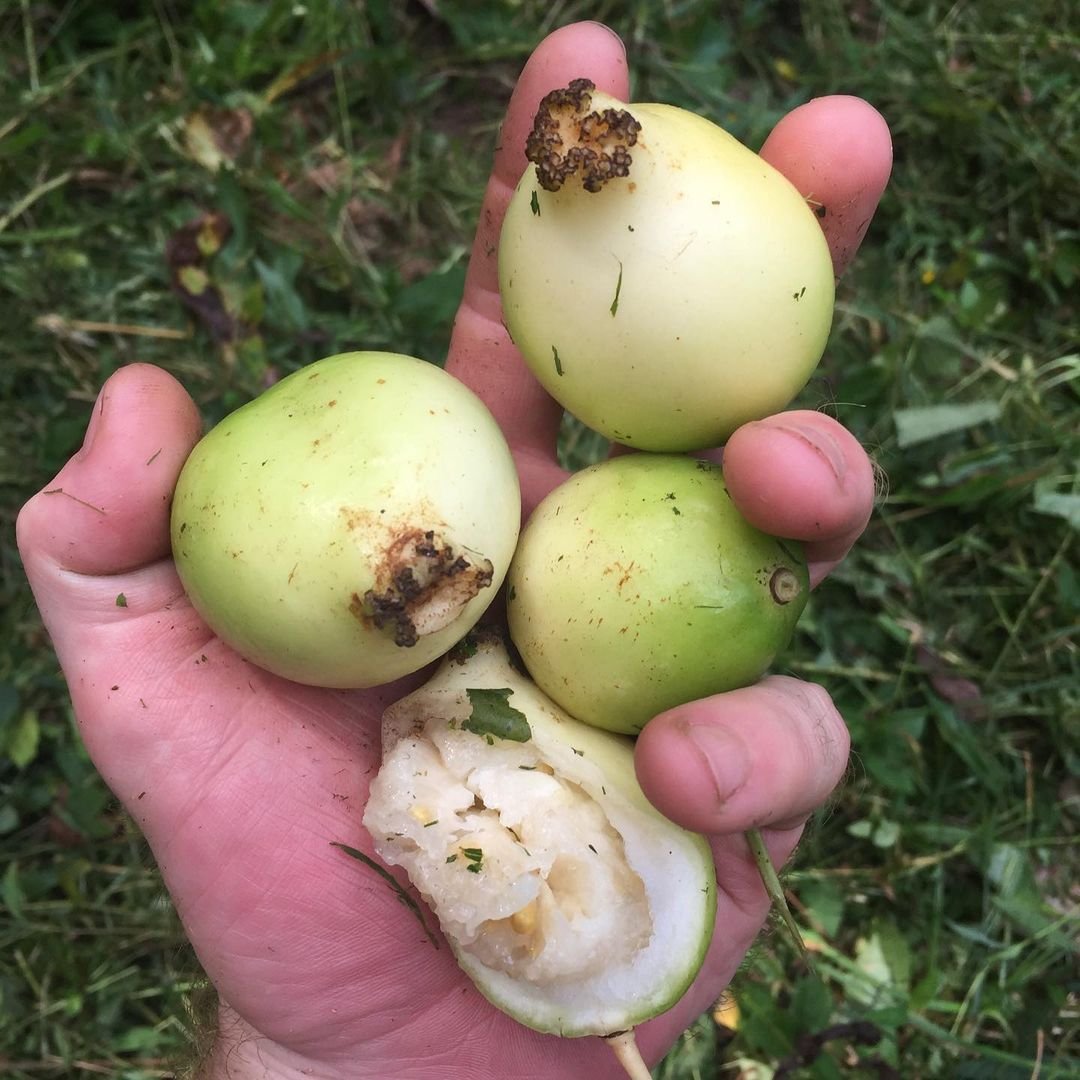
Here’s a short information chart about Mayapple fruit:
| Aspect | Information |
|---|---|
| Name | Mayapple Fruit |
| Scientific Name | Podophyllum peltatum |
| Common Names | American mandrake, wild mandrake, ground lemon |
| Origin | North America, particularly eastern regions |
| Family | Berberidaceae |
| Nutritional Value | Limited data; some sources suggest it contains vitamins and minerals, but it’s not typically consumed for its nutritional value |
| Taste | Tart and slightly sweet, with a citrus-like flavor |
| Season | Typically fruits in late spring to early summer |
| Uses | Rarely consumed due to potential toxicity; historically used in traditional medicine by Indigenous peoples for various purposes |
| Cultivation | Grows in woodland areas with moist, well-drained soil; spreads through rhizomes and seeds |
| Health Benefits | Limited research on health benefits; historically used for medicinal purposes but can be toxic if not properly prepared |
| Fun Fact | The name “mayapple” is derived from the time of year when the fruit typically ripens, in May and the appearance of its umbrella-like leaves. |
Native to North America, the Mayapple is a unique fruit that grows underground. Its yellow flesh is sweet and tangy, with a flavor similar to lemon or banana. While edible, it’s important to note that other parts of the mayapple plant are toxic.
14. Marang
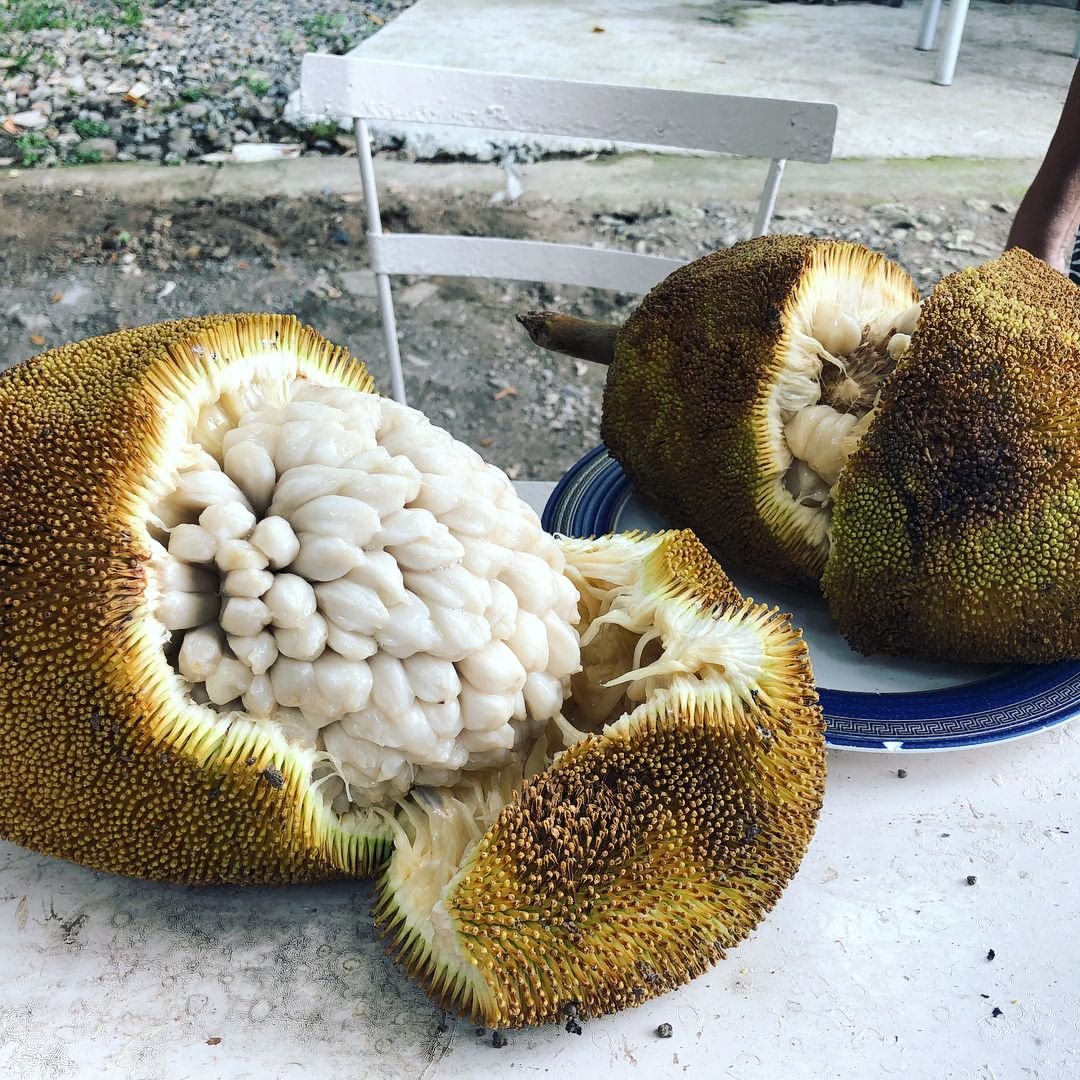
Here’s a concise information chart about Marang fruit:
| Aspect | Information |
|---|---|
| Name | Marang Fruit |
| Scientific Name | Artocarpus odoratissimus |
| Origin | Philippines, Borneo and other Southeast Asian regions |
| Family | Moraceae |
| Nutritional Value | Rich in carbohydrates, dietary fiber and vitamins |
| Taste | Sweet and fragrant, reminiscent of jackfruit |
| Varieties | No distinct varieties |
| Season | Typically fruits in summer and early autumn |
| Uses | Eaten fresh, as a dessert fruit; sometimes used in jams, preserves or cooked dishes |
| Cultivation | Grows in tropical climates, prefers well-drained soil and ample sunlight |
| Health Benefits | Good source of energy, dietary fiber and essential vitamins and minerals |
| Fun Fact | Marang fruit is highly prized in Southeast Asia for its delicious flavor and aroma, often compared to a mix of banana pineapple, and jackfruit. |
Originating from Malaysia, Marang is a fruit that resembles a durian but with a softer exterior and a sweeter, custard-like flesh. It’s rich in carbohydrates and dietary fiber, making it a filling and nutritious snack.
15. Mexican Lime
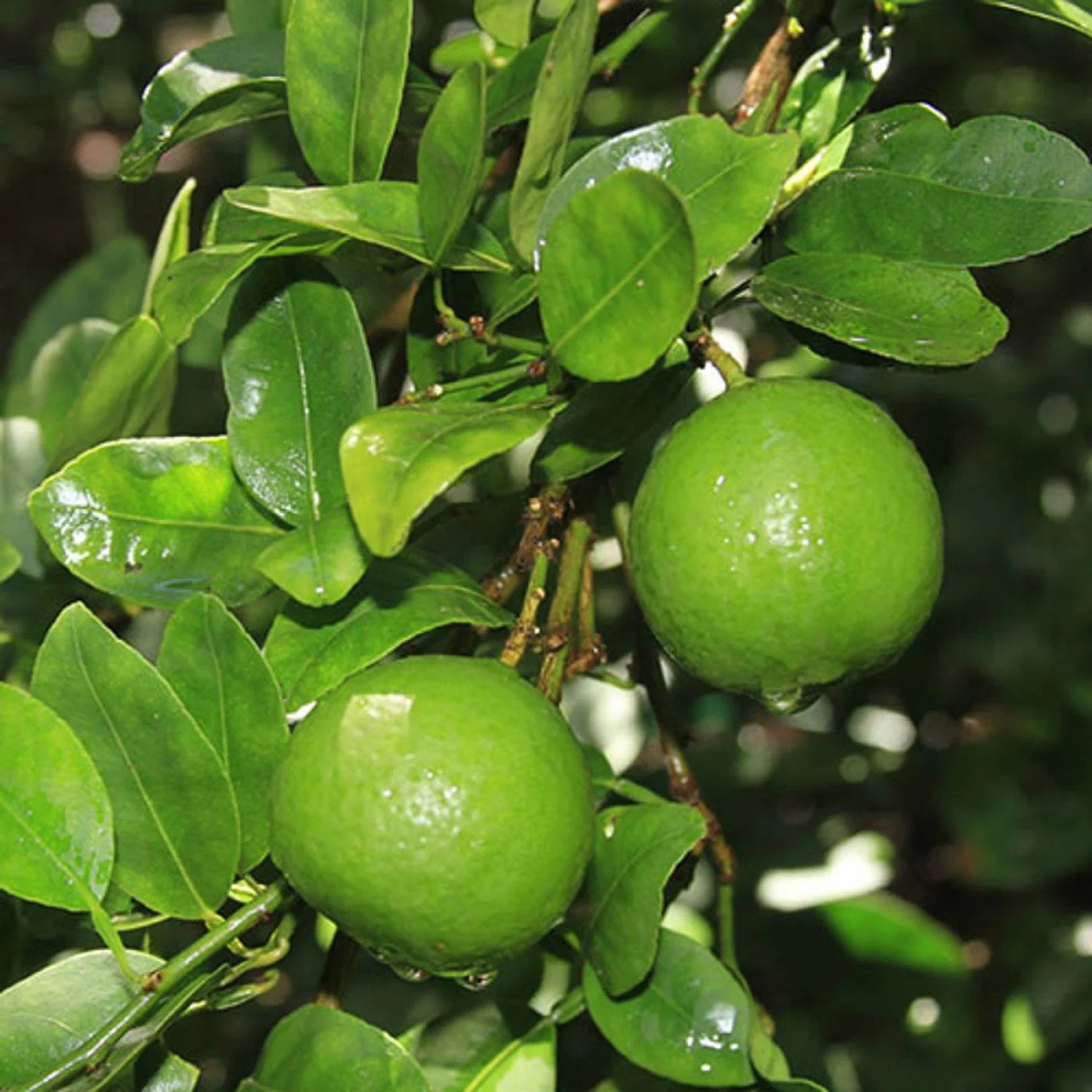
Here’s a concise information chart about Mexican Lime:
| Aspect | Information |
|---|---|
| Name | Mexican Lime |
| Scientific Name | Citrus aurantiifolia |
| Common Names | Key lime, West Indian lime, bartender’s lime |
| Origin | Southeast Asia, but commonly associated with Mexico and the Caribbean |
| Family | Rutaceae |
| Nutritional Value | High in Vitamin C and antioxidants |
| Taste | Tart and tangy, with a distinctive citrus flavor |
| Varieties | Different cultivars exist, including Bearss and Mexican Thornless |
| Season | Typically harvested year-round in suitable climates |
| Uses | Widely used in culinary applications, including beverages, marinades, desserts and dressings |
| Cultivation | Grows in subtropical and tropical climates, prefers well-drained soil and ample sunlight |
| Health Benefits | Rich in antioxidants, supports immune function and aids digestion |
| Fun Fact | Mexican limes are a popular ingredient in Mexican cuisine, particularly in dishes like guacamole, ceviche and margaritas. |
Smaller and more potent than its Persian cousin, the Mexican Lime or Key Lime, is a staple in Latin American cuisine. It’s used in making margaritas, key lime pies and various dishes. High in vitamin C, Mexican limes add a zesty flavor to any meal.
The fruits that start with “M” offer a delightful mix of flavors, textures and health benefits. From the sweet and juicy mango to the exotic and nutritious mamey sapote, these fruits enrich our diets and culinary experiences. As you explore this diverse group, consider how you can incorporate them into your meals and snacks. Whether you’re looking to boost your nutrition, add variety to your diet, or simply satisfy your taste buds, the “M” fruits have something to offer everyone. Remember, the key to a healthy lifestyle is variety and these fruits are a delicious way to achieve it. Enjoy your journey through the world of “M” fruits!

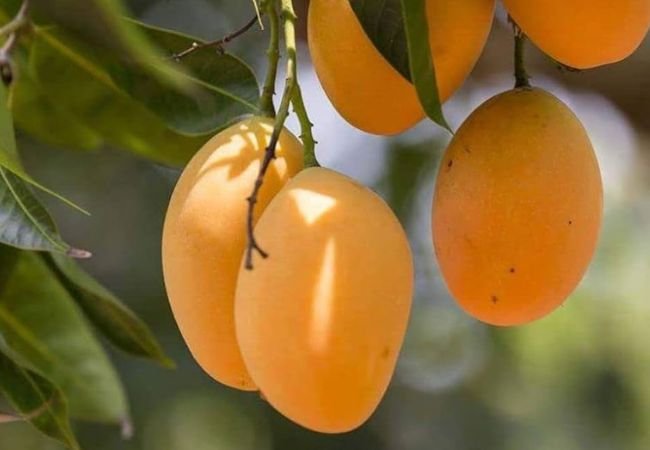






Leave a Reply